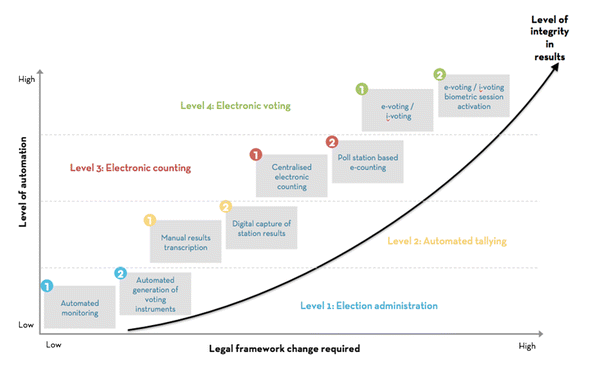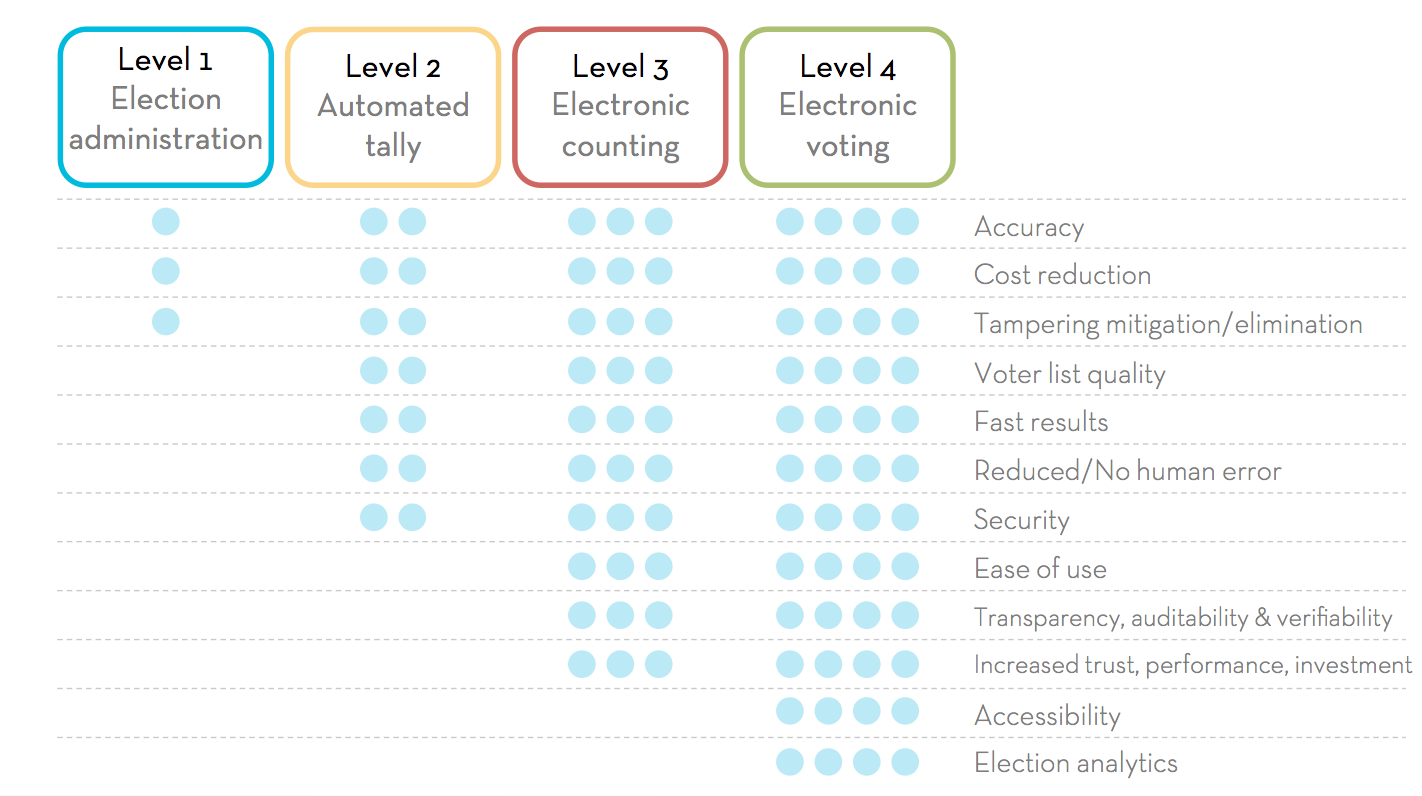Researchers at Electoralmaturity.org, a Smartmatic-sponsored blog, developed a systematic approach to the adoption of election technology which enables those who want to improve their elections to better understand the different stages in which technology can be implemented and how it can benefit the overall process.

The model goes from elections in which every step is manual, to an ideal in which all tasked are automated. The underlying principle of the model is: the more automation the better. Although it is theoretically possible to complete all eight steps, no country has ever done it.
Understanding that automation is not an end in itself, researchers created the graph below which details the benefits that each added layer of automation brings.

In spite the benefits, certain barriers sometimes impede the adoption of technology.
We have identified four main barriers to automation:
- Economic. When the technology acquired is priced accordingly, the cost per voter per election falls significantly. Even after taking into consideration the initial investment.
- Political. Elections are all about shifting political power, so it is often political elites who decide to promote or block technology. It is important to point that an agreement amongst all political stakeholders is always crucial to guarantee that election outcomes are trusted.
- Cultural. Technology not only modifies how votes are cast, but also ow people perceive results. The culture of the voters, which includes technology use, literacy levels and many other variables, need to be into account when a system is chosen.
- Legal. As a general rule, the closer technology gets to the voter, the more difficult it is to implement.
To learn more about the Election Maturity Model, contact us at communications@smartmatic.com